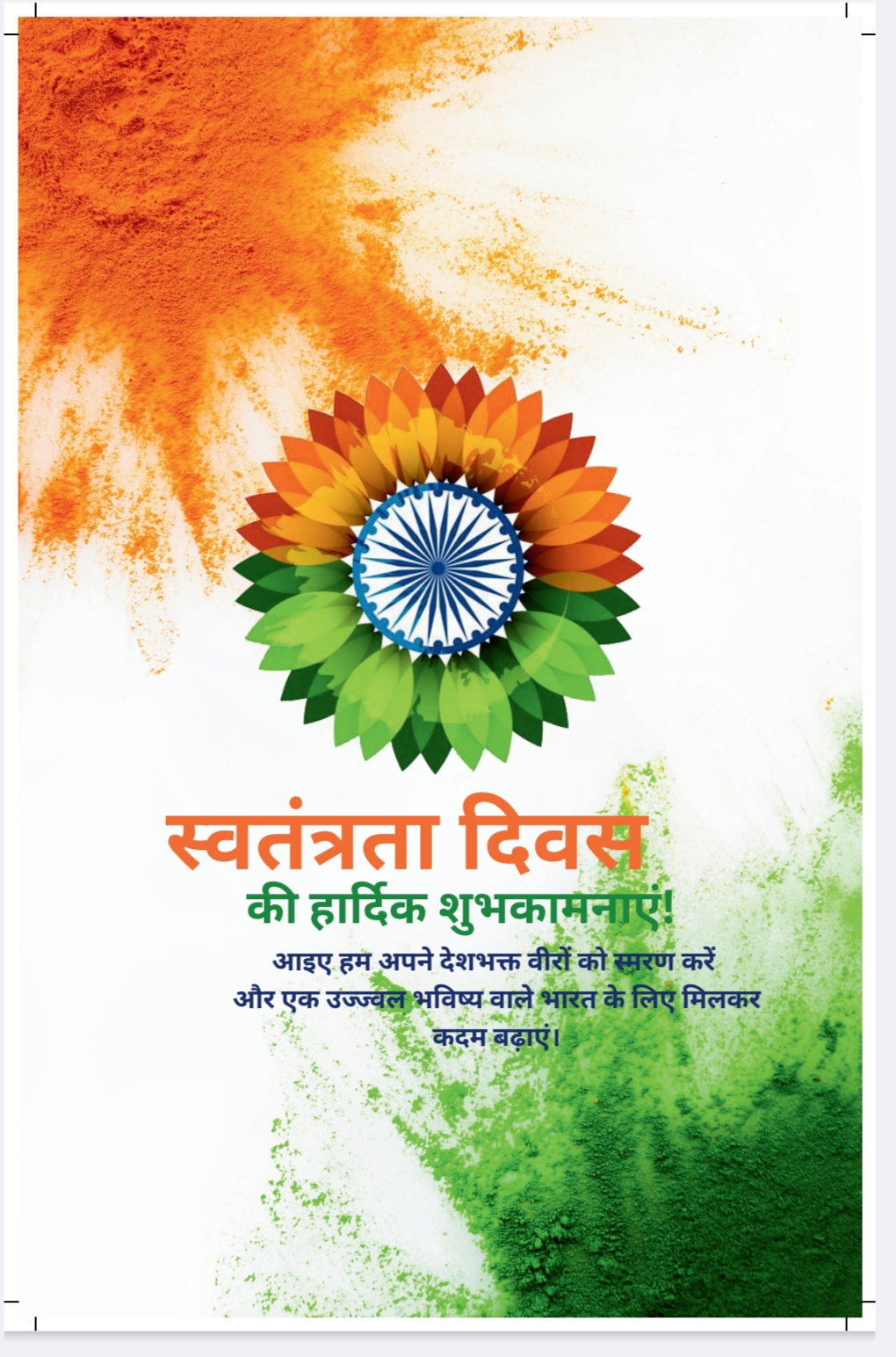- Today is:
ET NEWS
A case that exposes dark side of dating apps
A 16-year-old boy from Kerala recently became the victim in a disturbing case that highlights the dangers of online dating apps.Police charged 14 people, including government workers, with sexually assaulting the teenager. The group allegedly befriended the boy through the app before the attacks occurred.As the investigation unfolded last month, it was discovered the teenager, who is now safe, had been using fake profiles to stay active on the platform for almost two years.Tragically, this kind of predatory incident is not a rare occurrence, for the police. They report that such crimes are becoming increasingly common.They say this falls squarely within the patterns they regularly encounter through their Digital De-addiction (D-DAD) programme, an initiative aimed at identifying and rehabilitating children hooked on online games, social media, and pornography.Launched in 2023, the D-DAD project is the first of its kind in the country.At present, there are six centres operating under it-in Thiruvananthapuram, Kollam, Kochi, Thrissur, Kozhikode, and Kannur. With encouraging responses from parents, schools, and child rights activists, the police now plan to expand the initiative to Pathanamthitta, Alappuzha, Kottayam, Palakkad, Malappuram, Wayanad, Idukki, and Kasaragod before the close of the 2025-26 financial year.According to official data, between March 2023 and July 2025, D-DAD centres handled as many as 1,992 cases of digital addiction. Of these, 571 involved children addicted specifically to online games.Sooraj Kumar M B, nodal officer of the Student Police Cadet (SPC) Project in Ernakulam and coordinator of the district's D-DAD centre, said the initiative has provided timely intervention for hundreds of children."The trend we see is that boys are largely addicted to online games while girls are drawn more to social media platforms. Our counsellors suggest practical methods to overcome these habits and also engage parents in the process," he told PTI.According to Sooraj, one of the project's major successes has been in changing parental attitudes. "Earlier, many families refused to accept mobile phone use as an addiction, unlike alcohol or drugs. Now, with more cases being reported, parents are realising that digital addiction is real-and they want their children to come out of it".The state government recently renewed contracts for counsellors at the centres, which had expired in July this year, and is in the process of appointing additional staff to meet rising demand.Concerns over excessive mobile and internet use among children were also raised in the recent state Assembly session. Responding to a question by MLA K J Maxi, Chief Minister Pinarayi Vijayan revealed that 41 children had committed suicide between January 2021 and September 9, 2025, due to misuse of mobile phones and the internet.He also said that in the same period, 30 children were identified and faced legal action after being found involved in sexual or narcotics-related crimes linked to misuse of digital platforms.Cyber law expert and Cyber Suraksha Foundation founder advocate Jiyas Jamal described the D-DAD programme as a model initiative that other states should emulate. But he warned that the growing misuse of dating apps by minors poses a serious challenge."Dating apps are gaining popularity among teenagers, even though they are meant strictly for adults over 18. Weak verification measures allow underage users to slip through, and these apps are fast becoming a hub for illegal activities and child exploitation," he said.Jamal pointed out that many of these apps operate illegally from servers abroad and aggressively promote themselves through targeted advertisements on social media. "Platforms running these ads must also be held accountable. Just as the central government has brought in rules to regulate online gaming, similar stringent norms are needed for social media and dating apps," he said.Jamal said that children often fall into traps set by people through these dating apps and are blackmailed for financial gains or forced into illegal activities. "I have received several cases where parents only realise the trap in which their children fell after losing money. Some exploit children for sexual acts such as pornography and the narcotics trade," he said.Apart from the police, the Women and Child Development (WCD) Department and the Education Department are also running a set of programmes to help children and parents overcome digital addictions.WCD officials said that the Our Responsibility to Children (ORC) initiative has been introduced in 1,227 schools across the state to conduct awareness programmes about issues faced by children including digital addiction among students.In coordination with the Education Department, psycho-social counsellors have been appointed in 1,012 schools to provide professional support to children in need."Apart from this, we have also started parenting clinics at the block panchayat level. Another initiative, called Vulnerability Mapping, is being implemented in a panchayat in Thiruvananthapuram district to identify vulnerable children and take necessary steps," a WCD officer said.
7th pay commission update: Dress allowance paid
Who's Sanae Takaichi, likely 1st woman PM of Japan
Why are Indian watches behind the times?
Husband & 2 sons ordered to pay Rs 21,000 to wife
Delhi to receive thunderstorm, rainfall on Sunday
Cyclone Shakti to weaken in the Arabian Sea
Will Arattai be India’s answer to WhatsApp?
McKinsey, BCG & peers cross $1 bn-mark in India
Fashion Inc drapes IP cover to fight fakes
From Parisian flea markets to Jalandhar's bazaars, the menace of counterfeit designer products is almost as old as the fashion industry itself. However, with businesses coming under the corporate umbrella and expanding over the past decade, design houses are taking a more active stand towards safeguarding their creations.Domestic design registrations under the Design Act jumped more than three times in FY24 to 25,911 from FY20, with clothing and haberdashery driving the surge. Total applications filed climbed 34% last year, with 3,091 filings in clothing alone, a 24% rise from the previous year. Notably, Sabyasachi Calcutta LLP, which operates the luxury fashion house Sabyasachi, filed more than 1,000 design applications, the highest among categories. The company is 51% owned by Aditya Birla Fashion and Retail Ltd and 49% by Kolkata-based celebrated fashion designer Sabyasachi Mukherjee."A decade ago, very few of us gave IP protection much thought," said fashion designer Gaurav Gupta. "Today, even smaller studios are registering designs, documenting their work, and seeing protection as part of the creative process. What once felt like legal overhead now feels like caring for your brand," said Gupta, who has filed eight anti-counterfeiting cases since 2021. Gupta however pointed out that the large share of a single designer signifies that many others are still to embrace formal protection.The government is also working on amendments.124311842Possible Changes in IP LawsThese amendments are aimed at making intellectual property (IP) protection easier across industries. The Ministry of Commerce and Industry, through its departments, has begun stakeholder consultations to discuss possible changes to IP laws. One such consultation was held on September 26 which saw participation from several sectors including fashion.Kaustubh Sinha, partner, Adhrit Legal, who attended on behalf of the Fashion Design Council of India (FDCI), said the Centre is taking inputs from industries where IP is a critical asset. “Various issues were deliberated, including suggestions to reduce time-bound processes,” he said.Currently, registering designs under the Designs Act typically takes six months to a year, he said.Unlike industrial design, copyright protection is automatic from the moment a work is created but only if it is reproduced fewer than 50 times, a restriction that has created a lacuna for the fashion industry, he added.The FDCI is preparing recommendations, among them a plan to cut the design registration timeline from up to a year to just a few months. “In industrial design, the process itself becomes the enemy,” said Sinha. “When a designer creates a product, they cannot afford to wait a year before launching it.”PAST RULINGSIn August, the Delhi High Court granted an ad-interim injunction to fashion designer Rahul Mishra after parties were accused of copying motifs from his Sunderbans collection.Earlier this year, the court ruled in favour of Louis Vuitton, restraining Delhi shop owners from selling counterfeit handbags and belts. Other designers such as Tarun Tahiliani, Anita Dongre, and Manish Malhotra have also secured injunctions in the past.However, for many designers, the real struggle begins only after securing protection. Tracking infringements, issuing notices, and pursuing litigation is resource-heavy. Gupta underlined that the challenge lies more in enforcing the rights than registering them. He called for faster takedown mechanisms, proactive platform cooperation, and easier IP support for small creators, stressing that protection should be “accessible to all who dream.”Lawyers agree that judicial rulings, while important, rarely solve the problem on the ground. Priyanka Khimani, an IP lawyer, said landmark judgments help build jurisprudence but “their impact at the street or supply-chain level remains limited unless backed by sustained enforcement.” Even after a designer wins in court, she noted, fakes often continue to proliferate online, in Tier 2 and 3 cities, and in unregulated markets.Industry leaders argue that structural fixes are needed. Sunil Sethi, chairman of FDCI, said piracy and counterfeit flash sales are a growing menace and asked for a system that allows for ex-parte orders and local commissioners to act swiftly. He suggested a forum akin to consumer courts where smaller designers could resolve disputes quickly, rather than being priced out of justice.Despite the gaps, some see positive momentum. “Recent judgments are game changers as this now allows the industry to be treated from just a craft to commercial IP assets,” said Safir Anand, senior partner at Anand and Anand. “Counterfeiters now face the risk of fast takedowns. Platforms are being put on notice. And this sends a positive signal to the global luxury industry, making foreign entities more confident about investing in Indian designs knowing their rights will remain sacrosanct.”
Met office issues orange alert for hail, rain in HP
'Police can’t probe Zubeen’s death in Singapore'
No FASTag? Pay more in cash, less via UPI
Vehicles without functional FASTags will be charged only 1.25 times of the applicable user fee if they pay by Unified Payment Interface (UPI) against twice the fee if cash is used in the transaction.The decision incentivises digital payments and is aimed at minimising cash transactions at the user fee plazas on the national highways. As per the amended National Highways Fee (Determination of Rates and Collection) Rules, 2008, vehicles entering a fee plaza without a valid, functional FASTag will be charged only 1.25 times the applicable user fee for that category of the vehicle if they opt to pay via the UPI, the ministry of road transport and highways said on Saturday. This will be effective from November 15. "This amendment aims to strengthen the fee collection process, enhance transparency in toll collection and promote ease of commuting for the national highway users," it said.
Shooting near Houston leaves 2 children dead
'Bal Thackeray died 2 days before official date'
Poisoning angle surfaces in death of Zubeen Garg
Gehlot, Baghel, Adhir to be Cong observers for Bihar
PM Modi to attend event in Sonipat on October 17
So, how close is the Gaza war to ending?
President Donald Trump has urged Israel to halt its bombing of Gaza after Hamas agreed to release hostages and accepted some key parts of a U.S. peace plan - a shift that could mean a two-year-old war is finally coming to a close. Israel announced it would work on "immediate implementation" of the first stage of the plan, which Prime Minister Benjamin Netanyahu approved during a trip to Washington. Yet potential pitfalls remain -- the precise timeline for implementing Trump's plan remains unclear, some logistics may prove problematic because of Gaza's devastation, and issues such as Hamas' disarmament and Israel's withdrawal appear unsettled. Previous ceasefires during the war came to an end with Israel reviving its offensive and fighting resuming. WHEN COULD THE GUNS FALL SILENT? It already seems calmer, despite some sporadic Israeli strikes. After Trump's demand for a halt to Israeli bombing, Gaza residents in the first hours afterwards reported heavy bombardments on Gaza City, which has been the focus of an intense Israeli offensive. Since then, residents say air strikes and other fire has dropped off dramatically, with periods of relative calm and only occasional blasts. DOES THIS MEAN THE WAR IS FINALLY DRAWING TO A CLOSE? Potentially. Trump has said he is determined to bring an end to the conflict with this 20-point plan, stating in his message on social media on Friday: "This is not about Gaza alone, this is about long sought PEACE in the Middle East." But this deal follows previous ceasefire attempts - one shortly after the war began in 2023 and another earlier this year - that lasted only a few weeks before war erupted again. There are plenty of hurdles ahead this time too. Hamas's response left several key issues unaddressed. For example, the Palestinian militant group, whose attack on Israel in October 2023 sparked Israel's offensive, did not make clear its position on disarmament, a key demand in Trump's plan and one of Israel's main stated objectives for the war. Meanwhile, Benjamin Netanyahu gave his approval to the plan even though it offers a possible pathway, albeit a highly conditional one, to a future Palestinian state, something the Israeli prime minister has bluntly said he would never allow. Other potential sticking points include the timing and boundaries for an Israeli withdrawal and future governance of the enclave. Oren Setter, senior fellow at Harvard's Belfer Center and former head of the Israel Defense Forces strategic planning division, said it was a significant achievement by Trump to get all the sides to engage with the plan, adding: "But it's the beginning of the process. It's not the end of the process." WHAT HAPPENS NEXT AND WHEN? Trump's plan did not give a very clear timeline. The plan stated the war would end immediately once both sides had agreed to the proposal. However, Hamas' response did not approve all of the 20 points, saying it would engage "through mediators, in negotiations to discuss the details of this process". The plan said all hostages, alive and deceased, were due to be released within 72 hours of Israel publicly accepting the agreement, but it was not clear at what precise point the clock on that 72-hour deadline would start ticking, given Netanyahu agreed to the timeline several days before Hamas responded. There may be logistical challenges too. Sources close to Hamas say handing over living hostages could prove relatively straightforward, but retrieving bodies of dead hostages amid the rubble of Gaza may take longer than a few days to achieve. Israel says 48 hostages remain in Gaza out of the 251 seized by Hamas in their October 2023 assault, 20 of whom are alive. WHAT ARE THE POSSIBLE POLITICAL CALCULATIONS BY HAMAS AND ISRAEL? Both Israel and Hamas seem intent on showing a positive response to Trump, but face their own political calculations. For Netanyahu, agreeing to the plan may be based on a calculation that he can keep on the right side of Trump and the United States, Israel's vital ally, while also conceding as little as possible to avoid alienating his religious nationalist coalition partners, who have been staunch opponents of any deal with the Palestinians and have long pushed to continue the war. Meanwhile, the response by Hamas, which involves agreeing to release hostages but leaving several issues unresolved, may have helped shift the immediate focus to other players, including Arab mediators in the negotiations throughout the war, such as Qatar and Egypt, or other Arab or Islamic states who have been pressing the U.S. president to end the conflict, said International Crisis Group analyst Amjad Iraqi. "Hamas has actually made rather a smart move by saying 'yes and' or 'yes but'. In that kind of approach, they basically helped to kind of throw the ball back into the courts of Netanyahu, but also the Arab states," he said. HOW DOES HAMAS'S RESPONSE MEASURE UP AGAINST TRUMP'S PLAN? Here is how the group addressed or sidestepped main points of the plan: * Release of hostages: Hamas said it would release Israeli hostages in Gaza, both living and dead, according to the exchange formula in the plan, but referred to "the necessary field conditions for implementing the exchange", without specifying what those conditions were. * Israeli withdrawal: Hamas said it accepted the framework to end the war and referred to Israel's "full withdrawal" from the enclave, while the plan said "Israeli forces will withdraw to the agreed upon line to prepare for a hostage release" and also referred to a "staged withdrawal". * Future governance: Hamas, which has ruled Gaza since 2007, said it would hand over Gaza's administration to a Palestinian technocratic authority with Palestinian, Arab and Islamic backing, while the Trump plan said a Palestinian technocratic administration would be supervised by a new international transitional body, headed by Trump and including others such as former British Prime Minister Tony Blair. * The future of Hamas: Hamas said it saw itself as part of a "comprehensive Palestinian national framework" and did not comment on demilitarisation, a move it has previously rejected, while the plan said Hamas would not have any role in the governance of Gaza and referred to a process of demilitarisation of Gaza.
Pagination

The Economic Times: Breaking news, views, reviews, cricket from across India
Subscribe to ET NEWS feed











Recent comments